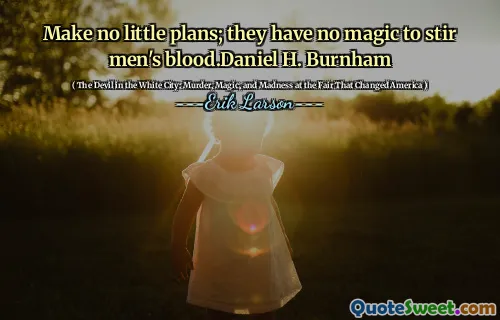The story, too, tends to illustrate the end of the century.
In "The Devil in the White City," Erik Larson explores the intertwining tales of the 1893 World's Fair in Chicago and the chilling actions of serial killer H.H. Holmes. The narrative juxtaposes the fair's grandeur and innovation against the backdrop of darkness and deceit, highlighting the era's complexities. Larson's work not only delves into the architectural marvels and cultural achievements of the fair but also examines the societal issues and moral questions of the time.
The story embodies the transitional period at the close of the 19th century, emphasizing how progress and horror can coexist. The grandeur of the fair symbolizes America’s optimistic future, while Holmes represents the lurking perils of unchecked ambition and evil. Through this dual narrative, Larson paints a vivid picture of a nation grappling with rapid change and the stark realities that often accompany it.






